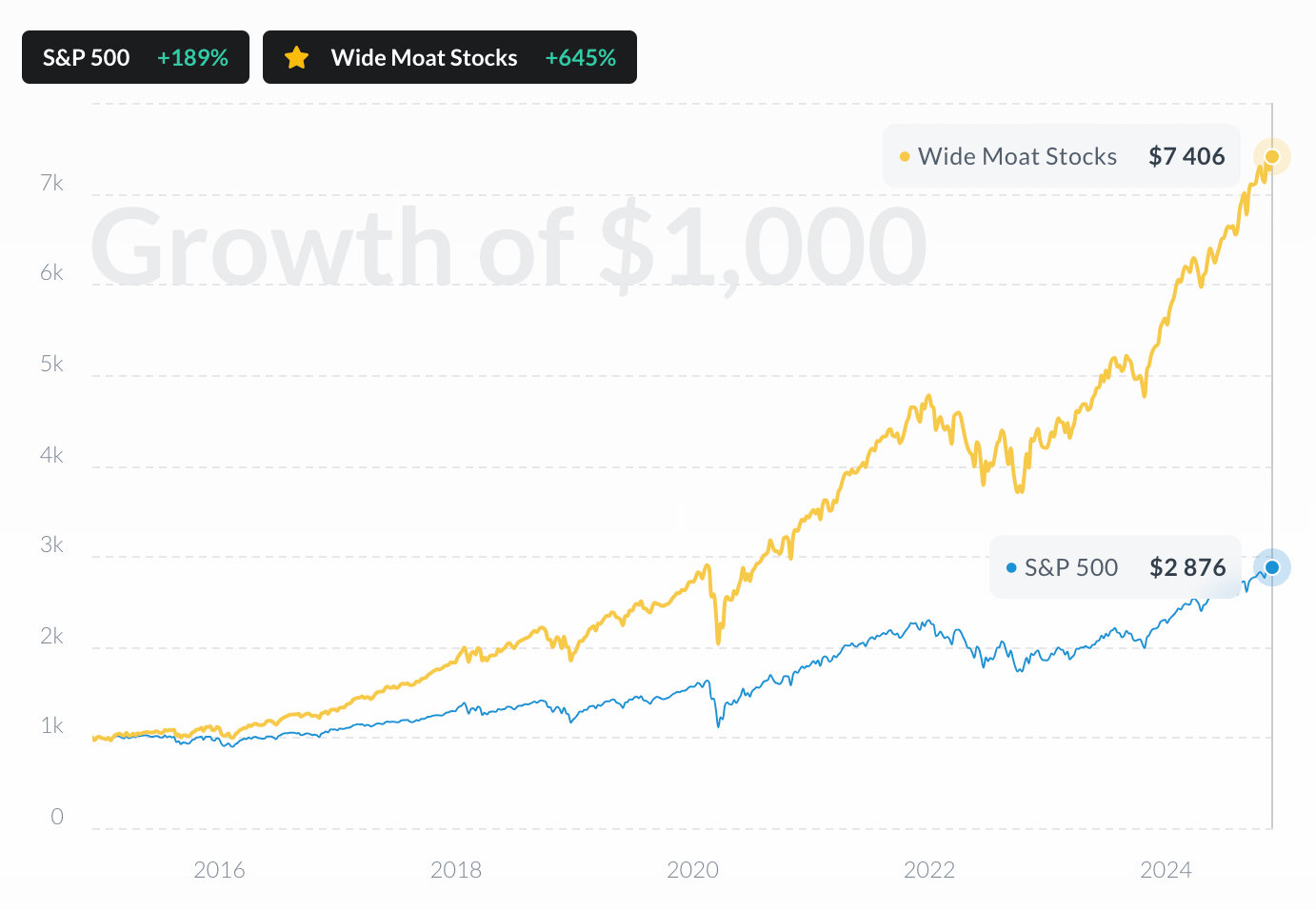
Broadcom: Business Overview

Broadcom (AVGO) is a compelling investment due to its dominance in semiconductor solutions, leadership in networking and AI accelerators, and strong partnerships with major tech firms. The company's expertise in custom chips, including AI-focused silicon and networking hardware, gives it a competitive edge in data centers and enterprise computing. Broadcom’s diversified revenue streams, spanning wireless connectivity, infrastructure software, and cloud computing, provide stability and long-term growth potential. With a robust financial position, high-margin software acquisitions like VMware, and increasing demand for AI-driven hardware, Broadcom remains well-positioned for continued expansion.
Broadcom (AVGO) is a global leader in semiconductor and infrastructure software solutions, known for its innovation in networking, wireless connectivity, and enterprise computing. The company operates across key segments, including semiconductors, broadband, data centers, and software, providing essential technology for cloud computing, telecommunications, and AI-driven applications. Broadcom generates significant revenue from custom silicon solutions for top-tier clients, including Apple, alongside its high-margin infrastructure software business, which expanded with the acquisition of VMware.
Broadcom maintains a competitive edge through its vertically integrated semiconductor solutions, expertise in AI-accelerated networking, and strategic partnerships with hyperscalers and enterprise customers. Its custom chips, including AI-driven accelerators and networking hardware, play a critical role in enabling next-generation data centers and AI workloads, reinforcing its leadership in high-performance computing.
With its dominance in semiconductor innovation, expanding software business, and increasing demand for AI-powered infrastructure, Broadcom remains at the forefront of technological advancements, driving long-term growth in the global digital economy.
ECONOMIC MOAT
AVGO has a WIDE ECONOMIC MOAT. Broadcom Inc. has built a strong economic moat through its leadership in semiconductor solutions, deep industry integration, and long-term strategic partnerships with major technology firms.
The company maintains a significant competitive edge with its custom silicon for AI, networking, and data center applications, alongside a high-margin infrastructure software business. Broadcom’s dominance in wireless connectivity, cloud computing, and enterprise networking ensures sustained demand, while its acquisition-driven expansion, including VMware, strengthens its ecosystem and recurring revenue streams.
1. Market Leadership in AI and Accelerated Computing
Broadcom is a key player in AI-driven computing, specializing in high-performance networking, custom silicon, and AI acceleration technologies. Its AI-optimized ASICs and networking solutions power next-generation data centers, hyperscalers, and enterprise computing. Broadcom’s expertise in AI inference and workload acceleration ensures superior efficiency for cloud and edge applications, reinforcing its competitive position.
2. Advanced AI and Edge Computing Solutions
Broadcom’s custom AI accelerators and high-speed networking chips are designed for real-time data processing at the edge. Its advanced semiconductor solutions enhance AI workloads across cloud computing, 5G, and IoT, enabling faster, more efficient AI model execution. Broadcom’s edge computing approach ensures low-latency, high-efficiency processing for AI-powered applications in various industries.
3. AI-Powered Software and Platform Ecosystem
Beyond semiconductors, Broadcom provides AI-optimized infrastructure software, including VMware’s AI-driven enterprise solutions. These platforms integrate seamlessly with Broadcom’s networking hardware, enhancing AI model deployment across hybrid cloud environments. Broadcom’s AI-driven cybersecurity and data management tools further strengthen its ecosystem, driving long-term customer engagement.
4. Vertically Integrated AI and Semiconductor Supply Chain
Broadcom designs and manufactures its own high-performance AI chips, optimizing efficiency across its entire portfolio. Its strategic relationships with foundries like TSMC ensure access to leading-edge semiconductor process nodes, while its proprietary chip designs enhance AI acceleration in cloud computing, telecom, and enterprise networking. This vertical integration improves scalability and profit margins.
5. Infrastructure and Strategic Partnerships
Broadcom’s AI leadership is reinforced through strategic collaborations with hyperscalers like Google, Amazon, and Microsoft. Its AI-driven semiconductor solutions are widely adopted in cloud data centers, AI training clusters, and enterprise AI deployments. Additionally, partnerships in 5G, cybersecurity, and AI-driven networking expand Broadcom’s influence across multiple high-growth markets.
6. Expansion Beyond Data Centers into 5G, Automotive, and IoT
Broadcom is extending AI innovations beyond traditional data centers into 5G infrastructure, automotive AI, and IoT. Its AI-powered chips enable smart networking in autonomous vehicles, next-gen wireless connectivity, and real-time industrial automation. These advancements position Broadcom as a leader in AI-driven connectivity solutions, ensuring sustained long-term growth.
BULL AND BEAR THESES
Customer Concentration Risk – A large portion of Broadcom’s revenue comes from a few key customers, including Apple and major cloud providers. Any loss of a major contract or shift toward in-house chip development by these clients could significantly impact revenue.
Dominance in AI and Data Center Infrastructure – Broadcom is a key supplier of AI-optimized networking chips, custom silicon, and accelerators, making it an essential player in the AI revolution. As demand for AI workloads grows, Broadcom benefits from strong relationships with hyperscalers like Google, Amazon, and Microsoft.
PRODUCT OFFERING
1. Broadcom’s AI and Networking Solutions: AI ASICs and Other
Broadcom is a leader in AI-driven semiconductor solutions, specializing in networking, custom silicon, and AI accelerators, with a dominant presence in hyperscale data centers.
- Comparison: Nvidia leads the AI semiconductor market with a 80% share in GPU-based AI chips, while Broadcom focuses on custom AI ASICs and networking solutions used by major cloud providers. Unlike Nvidia, Broadcom’s strength lies in its deep integration with enterprise AI workloads and hyperscaler infrastructure.
- Competitive Edge: Broadcom’s custom AI accelerators, high-speed networking chips, and AI-powered security solutions make it an essential partner for cloud computing, enterprise AI, and high-performance computing (HPC) environments.
2. Cloud and Data Center Connectivity: ASICs
Broadcom provides essential semiconductor and software solutions that power global cloud infrastructure, ranking among the top providers of data center networking technology.
- Comparison: While AWS, Azure, and Google Cloud dominate the cloud services market, Broadcom supplies key networking and AI silicon that enables these platforms to scale efficiently.
- Competitive Edge: With high-speed Ethernet, PCIe, and custom ASICs, Broadcom ensures low-latency, high-bandwidth communication for AI training and cloud applications, positioning itself as a crucial enabler of cloud expansion.
3. Wireless Connectivity (Wi-Fi, 5G, and IoT)
Broadcom is a key supplier of Wi-Fi, Bluetooth, and 5G chips, powering mobile devices, routers, and IoT infrastructure.
- Comparison: Qualcomm dominates the mobile 5G modem market, while Broadcom leads in Wi-Fi 6E/7, enterprise networking, and connectivity solutions for IoT and industrial automation.
- Competitive Edge: Broadcom’s Wi-Fi 7, Bluetooth, and edge AI solutions drive next-generation wireless experiences, ensuring high-speed, low-latency communication across smart homes, industrial automation, and connected devices.
4. Enterprise Software (VMware Acquisition)
With its $69 billion acquisition of VMware, Broadcom has expanded into high-margin enterprise software.
- Comparison: Microsoft Azure and Amazon AWS dominate cloud services, but VMware provides essential virtualization and security solutions.
- Competitive Edge: Broadcom’s ownership of VMware ensures recurring software revenue, making it less cyclical than traditional semiconductor firms while enhancing its strategic positioning in hybrid and private cloud markets.
5. AI-Optimized Networking and High-Speed Interconnects
Broadcom is a critical supplier of PCIe, Ethernet, and AI fabric interconnects used in AI supercomputers and hyperscale data centers.
- Comparison: While Nvidia dominates AI training with its CUDA-enabled GPUs, Broadcom’s ultra-fast networking and interconnect solutions are essential for AI clusters, helping to scale large-language models (LLMs) efficiently.
- Competitive Edge: Broadcom’s high-bandwidth networking solutions, including custom silicon for AI and cloud computing, make it a foundational player in the AI-driven infrastructure boom.
6. Custom Silicon for Hyperscalers and Enterprise AI
Broadcom designs application-specific integrated circuits (ASICs) for Google, AWS, Microsoft, and Meta, optimizing cloud workloads and AI performance.
- Comparison: While AMD and Intel focus on general-purpose AI chips, Broadcom specializes in custom AI accelerators and high-performance networking ASICs tailored for hyperscalers.
- Competitive Edge: Broadcom’s deep partnerships with cloud giants and its focus on workload-specific silicon ensure long-term demand for its custom AI and cloud-optimized processors.
FINANCIAL RESULTS
1. Revenue Growth
Broadcom’s revenue has grown at a compound annual growth rate (CAGR) of over 20% in the past five years, fueled by rising demand for AI-driven networking, cloud infrastructure, and semiconductor solutions. This outpaces Intel’s 5% and Qualcomm’s 12% CAGR, underscoring Broadcom’s leadership in high-performance connectivity and enterprise software. With increasing AI workloads and cloud expansion, Broadcom’s revenue growth remains ahead of the semiconductor industry’s 8-10% CAGR.
2. Operating Income
Broadcom’s operating income has expanded at a CAGR of 25%, supported by its high-margin semiconductor and infrastructure software businesses. This outperforms Intel’s 8% and Cisco’s 11% CAGR, reflecting Broadcom’s strong pricing power and efficiency in AI accelerators, custom silicon, and networking solutions. The company’s expansion into enterprise software (VMware) and focus on AI-driven semiconductor solutions further enhance its profitability and long-term margin expansion.
3. Net Income and EPS Growth:
Broadcom’s net income has grown at a robust CAGR of 25%, outpacing the tech sector average of 12-14%, driven by the company’s strong position in semiconductors and networking solutions. While companies like Intel and Qualcomm have diversified portfolios, Broadcom’s focus on high-demand sectors like cloud computing, wireless, and broadband ensures continuous earnings growth. EPS growth has been fueled by strategic acquisitions, operational efficiency, and high-margin product offerings, along with growing demand for infrastructure solutions and networking equipment.
4. Free Cash Flow (FCF):
Broadcom has established itself as a strong free cash flow (FCF) generator, with an FCF CAGR exceeding 20%, driven by its high-margin semiconductor and infrastructure software businesses. While this is lower than NVIDIA’s 30%, it surpasses Intel’s 12% and aligns closely with Microsoft’s 18%. Broadcom’s diversified revenue streams, including recurring software subscriptions from VMware, provide stability and consistent cash flow. This strong FCF allows Broadcom to invest aggressively in R&D, pursue strategic acquisitions, and return capital to shareholders through dividends and buybacks. With the ongoing demand for AI-driven infrastructure and cloud computing, Broadcom’s FCF growth remains a key strength supporting its long-term expansion.
5. Margins and Profitability Analysis:
- Gross Margin: Broadcom's gross margin reached 62% in 2024, benefiting from its diversified semiconductor portfolio, particularly in broadband and networking solutions. While lower than software-driven giants like Microsoft (88%), it surpasses competitors like Qualcomm (58%) and Intel (42%), reflecting Broadcom’s strength in high-performance components.
- Operating Margin: Broadcom’s operating margin improved to 41% in 2024, up from 39% in the previous year, driven by strong demand in the networking and enterprise software sectors, as well as operational efficiencies. This exceeds companies like Intel (22%) and Qualcomm (32%), although it remains lower than leaders like Microsoft (44%) due to continued investments in R&D and acquisitions.
- Return on Equity (ROE): Broadcom’s ROE reached 41% in 2024, reflecting solid profitability and effective capital management. This is significantly higher than competitors like Qualcomm (26%) and Intel (14%), positioning Broadcom as a top performer within the semiconductor industry, though still trailing behind industry leaders like Microsoft (46%).
- Return on Invested Capital (ROIC): Broadcom’s ROIC reached 32% in 2024, supported by its strategic acquisitions and strong market positioning in key tech sectors. This surpasses Qualcomm (22%) and Intel (16%), reinforcing Broadcom’s role as a leading semiconductor company with high value creation potential.
SHAREHOLDERS RETURNS
1. Dividends
Broadcom has historically focused on delivering strong dividends to its shareholders, maintaining a robust payout policy. The company consistently rewards investors with significant dividend increases. In FY 2024, Broadcom's annual dividend per share was $18.40, reflecting a dividend yield of around 3%, which is above average compared to other large-cap technology companies. Unlike many tech firms that prioritize reinvestment in growth, Broadcom places a strong emphasis on returning value to its shareholders through dividends.
This approach is backed by Broadcom’s steady cash flow and profitability, which are bolstered by its strong position in semiconductor and infrastructure software markets. The company’s ability to generate high-margin revenue, particularly in networking, broadband, and enterprise software, allows it to maintain and grow its dividend payouts. Given Broadcom's history of steady growth and its commitment to returning capital to shareholders, the company is well-positioned to continue increasing dividends in the future.
2. Share Repurchases
Broadcom has been actively repurchasing shares as part of its shareholder return strategy. Over the past few years, Broadcom has significantly reduced the number of outstanding shares, contributing to an increase in earnings per share (EPS). In FY 2024, the company repurchased approximately $7 billion of its own stock, which is a clear sign of confidence in its long-term growth prospects. As of early 2025, Broadcom had more than $10 billion remaining under its share repurchase program.
The company’s active buyback program demonstrates its commitment to enhancing shareholder value while maintaining its focus on strategic investments, such as acquisitions in the semiconductor and software spaces. This balance of share repurchases with reinvestment in the business supports both immediate shareholder returns and sustainable long-term growth.
3. Shareholder Return Yield Over the Last 5 Years
Broadcom has delivered strong total shareholder return (TSR) over the past five years, driven by its leadership in semiconductor technology and strategic acquisitions. Between 2019 and 2024, Broadcom posted an average annual TSR of approximately 25-30%, supported by solid growth in its semiconductor and software businesses.
Comparison to Industry and S&P 500
- Technology Sector: The technology sector has averaged a TSR of around 20-22%, with growth driven by key players in semiconductors, cloud, and software. Broadcom's performance has exceeded this average, reflecting its position as a leader in networking and broadband infrastructure.
- S&P 500: The broader market delivered a TSR of approximately 12-14%, so Broadcom has significantly outpaced the broader market index.
- Peers: Compared to competitors like Qualcomm (~20-25%), Intel (~10-12%), and AMD (~35-40%), Broadcom’s TSR stands out due to its stable revenue base, strong dividend policy, and the successful integration of software assets.
With its continued growth in semiconductors, software solutions, and the expansion of high-margin infrastructure markets, Broadcom is well-positioned to sustain its strong shareholder return track record moving forward.
QUALITY OF EARNINGS
1. Revenue Generation & Profitability
Broadcom’s revenue is primarily driven by its leadership in semiconductor solutions, with strong contributions from its infrastructure software, broadband, wireless communications, and networking segments. This diversified model allows Broadcom to capture growth across multiple industries, including data centers, telecommunications, and consumer electronics. In FY 2024, Broadcom reported approximately $38 billion in revenue, with the semiconductor solutions segment contributing the majority (~75%), while the software segment accounted for around $10 billion (~25%), driven by its acquisitions of CA Technologies and Symantec’s enterprise division.
Broadcom’s profitability is supported by its focus on high-margin products and efficient operations. In FY 2024, EBITDA margin reached approximately 50%, boosted by its diverse semiconductor portfolio, strong pricing power, and consistent demand for broadband and wireless solutions. The company maintains a strong position as one of the most profitable semiconductor companies, with long-term growth prospects tied to the continued expansion of cloud infrastructure, broadband adoption, and 5G deployment.
2. Stock-Based Compensation (SBC)
Broadcom has utilized stock-based compensation (SBC) as a strategic tool to attract and retain top talent, particularly in its semiconductor and software divisions. Over the past five years, Broadcom’s SBC as a percentage of market capitalization (MCap) has averaged around 1% annually, reflecting its emphasis on providing equity-based incentives while maintaining a balanced compensation structure.
Comparison with Competitors:
- Qualcomm and Intel report slightly higher SBC ratios, averaging around 1.5% – 2% of MCap, as both companies focus on expanding their presence in mobile and cloud technologies.
- Texas Instruments has a lower SBC ratio (~0.5%), opting for more cash-based incentives to attract talent.
- Cisco offers SBC in the range of 1% – 2% of MCap, with a focus on rewarding key talent in its networking and security segments.
Comparison with S&P 500:
The broader S&P 500 average SBC-to-MCap ratio is approximately 0.5% – 1%, with most non-tech companies offering fewer stock-based incentives. Broadcom’s SBC reflects its focus on retaining specialized talent in both semiconductor development and software solutions, with competitive equity-based compensation, particularly in high-demand sectors such as 5G and cloud computing.
Despite its relatively moderate SBC levels, Broadcom has maintained strong revenue growth and profitability, enabling it to continue investing in its core business and strategic acquisitions while rewarding employees through equity-based incentives.
SENTIMENT
The sentiment towards Broadcom is highly positive, with 56% of investors on financial platforms expressing an optimistic view, while 33% hold a neutral position. The enthusiasm stems from Broadcom's strong market leadership in semiconductor solutions, particularly in the networking, broadband, and wireless sectors, as well as its impressive growth prospects in the 5G and data center markets.
Investors are particularly bullish on Broadcom's strategic acquisitions, such as its purchase of CA Technologies and Symantec’s enterprise security business, positioning the company as a major player in both hardware and software solutions for telecommunications, cloud infrastructure, and enterprise IT.
Broadcom's strong ability to maintain high margins, expand production capabilities, and leverage cutting-edge semiconductor technology enhances its long-term investment potential. With its diverse portfolio, including advanced networking, broadband, and wireless solutions, as well as strategic acquisitions such as CA Technologies and Symantec, Broadcom continues to cement its leadership in the semiconductor industry. By capitalizing on emerging trends in 5G, data centers, and AI-driven applications, the company remains a key player in the technology sector, offering substantial growth opportunities for investors.
BUSINESS COMPOSITION
| Segment | Share |
|---|---|
|
%
|
|
|
%
|
|
|
Semiconductor Solutions
55%
|
|
|
%
|
|
|
Infrastructure Software
45%
|
|
|
%
|
|
1. Semiconductor Solutions
Broadcom’s core business revolves around semiconductor solutions, providing essential components for networking, broadband, wireless communication, and data centers. The company’s dominance in custom ASICs, radio-frequency (RF) chips, and networking processors makes it a key supplier for industries ranging from telecommunications to AI infrastructure. Its strong relationships with major clients, including Apple and data center operators, ensure steady demand for its high-performance semiconductor products. With continuous innovation in chip design and integration of AI-driven capabilities, Broadcom remains a leader in the semiconductor space.
2. Infrastructure Software
Broadcom’s infrastructure software segment includes enterprise security, mainframe solutions, and software for managing IT operations. Following strategic acquisitions such as CA Technologies and Symantec’s enterprise security business, Broadcom has established itself as a major player in software, particularly in cybersecurity and cloud management. This segment enables businesses to optimize operations, enhance security, and streamline IT workloads, providing long-term, recurring revenue streams. Although initially a hardware-focused company, Broadcom’s push into software has strengthened its financial stability and diversified its revenue sources.
3. Other Investments
Beyond semiconductors and software, Broadcom invests in high-growth areas such as AI-driven networking, 5G infrastructure, and cloud-based security solutions. These initiatives support the company’s long-term strategy of expanding beyond traditional chipmaking and into broader digital infrastructure markets. While these ventures currently contribute a smaller share of revenue, they represent key areas for future growth as technology adoption accelerates.
Together, these segments highlight Broadcom’s diversified business model, balancing high-margin semiconductor solutions with a growing presence in enterprise software. By leveraging strategic acquisitions and continuous innovation, Broadcom strengthens its position as a critical enabler of global connectivity, AI, and cybersecurity.
CONCLUSION
Broadcom stands out as a leading technology company with a diversified business model spanning semiconductors, networking, broadband, and enterprise software solutions. Its dominance in key markets, including data centers, wireless communications, and cybersecurity, provides strong and recurring revenue streams, while strategic acquisitions have further expanded its technological capabilities and customer base.
The company’s focus on high-margin businesses, operational efficiency, and innovation in AI, 5G, and cloud infrastructure positions it for long-term growth. With a strong balance sheet, consistent free cash flow generation, and leadership in critical tech sectors, Broadcom remains a resilient and highly profitable enterprise.
Despite challenges such as regulatory scrutiny and FX risks, its strategic execution, disciplined capital allocation, and continuous expansion into high-growth markets make Broadcom a compelling long-term investment.

Dr. Viktor Kalm is a Senior Investment Analyst at Alpha Spread. He has over seven years of experience in corporate finance, specializing in financial modeling, business valuation, and strategic planning services. Previously, as a hedge fund manager, he focused on private equity management, consistently delivering positive returns to his clients.

Dr. Viktor Kalm is a Senior Investment Analyst at Alpha Spread. He has over seven years of experience in corporate finance, specializing in financial modeling, business valuation, and strategic planning services. Previously, as a hedge fund manager, he focused on private equity management, consistently delivering positive returns to his clients.








































 You don't have any saved screeners yet
You don't have any saved screeners yet